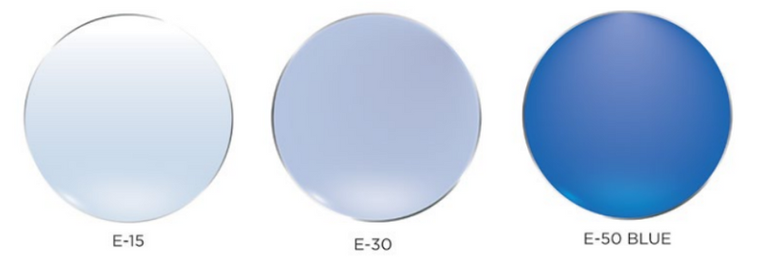Parkinson's Disease
Parkinson’s disease (PD) is a progressive neurological disorder that affects movement, balance, and cognition. Patients with PD often experience motor dysfunction, sleep disturbances, and mood disorders. Recent research suggests that blue-tinted lenses, such as E15, E30, and E50, may offer therapeutic benefits in managing some of these symptoms.

Potential Benefits of Blue-Tinted Lenses for Parkinson’s Disease
1. Improved Sleep Quality and Mood:
Sleep disturbances are common in Parkinson’s disease, affecting overall quality of life. Research has shown that blue light therapy can positively impact sleep-wake cycles and mood in PD patients. A study found that approximately 74% of PD patients who used blue light glasses experienced improvements in night-time sleep, reduced daytime sleepiness, better motor functioning, and decreased depressive symptoms. The usability and acceptability of blue-tinted lenses were rated positively among patients. (Whitehead et al., 2019)
2. Enhanced Motor Function and Balance:
Motor dysfunction, including tremors and balance issues, is a hallmark of Parkinson’s disease. Specialized tinted lenses, such as melanin-infused blue tints, have been designed to neurologically suppress tremors, reduce dyskinetic movements, and improve balance. These lenses help filter false peripheral visual signals, allowing the brain to process movement more effectively. (MedLenses, 2025)
3. Reduction of Visual Dysfunctions:
Parkinson’s disease can cause visual disturbances, including contrast sensitivity loss and difficulty with light adaptation. Some optometrists report that blue-tinted lenses may assist in reducing these visual challenges by enhancing contrast and reducing glare sensitivity. This can improve the overall visual experience for PD patients. (Optometry Industry 411, 2025)
Scientific Basis for Blue-Tinted Lenses in Parkinson’s Disease
A study by Yassine et al. (2022) explored functional brain dysconnectivity in PD over a 5-year period. The findings revealed significant impairments in brain connectivity, particularly in the α2 (10-13 Hz) and β (13-30 Hz) frequency bands, which correlated with cognitive decline and worsening motor symptoms. While this study does not directly address blue-tinted lenses, it highlights the importance of therapies that influence neural connectivity, suggesting that visual interventions like tinted lenses could play a role in symptom management. (Yassine et al., 2022, Movement Disorders, 37.7: 1444-1453)
Considerations and Recommendations
-
Individual Variability: The effects of blue-tinted lenses may differ from person to person, and not all PD patients may experience the same level of benefit.
-
Limited Research: While preliminary findings are promising, further clinical trials are needed to confirm the effectiveness of blue-tinted lenses in Parkinson’s disease treatment.
-
Consultation with a Specialist: Patients considering blue-tinted lenses should consult with their neurologist or optometrist to determine if this intervention is suitable for their specific symptoms.
Conclusion
Blue-tinted lenses, such as E15, E30, and E50, offer a potential non-pharmacological approach to managing some symptoms of Parkinson’s disease, including sleep disturbances, mood disorders, and motor dysfunction. While current research supports their use, more studies are necessary to fully understand their benefits. Consulting with healthcare professionals is essential before incorporating these lenses into a treatment plan.
References
-
Yassine, Sahar, et al. "Functional brain dysconnectivity in Parkinson's disease: a 5-year longitudinal study." Movement Disorders 37.7 (2022): 1444-1453.
-
Whitehead, D. L., et al. "The impact of light therapy on sleep, mood, and motor symptoms in Parkinson's disease: A pilot study." Journal of Parkinson's Disease 9.4 (2019): 701-708. PMCID: PMC6604290
-
MedLenses. "Parkinson’s Glasses – Neurological Suppression of Tremors and Dyskinesia." Accessed March 2025. MedLenses
-
Optometry Industry 411. "Use of Color-Tinted Lenses for a Wide Range of Health Issues Explained." Accessed March 2025. Optometry Industry 411















